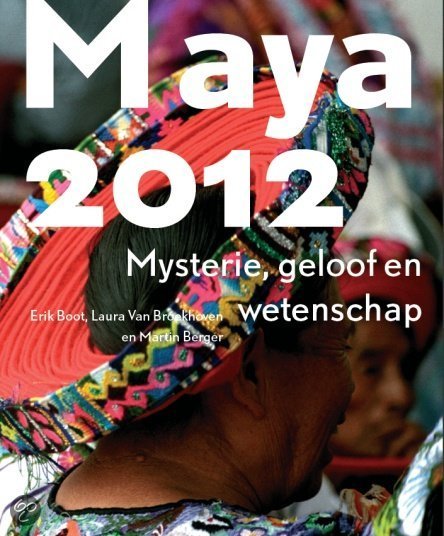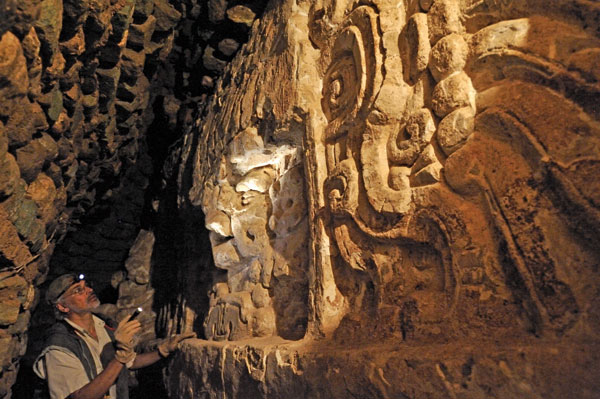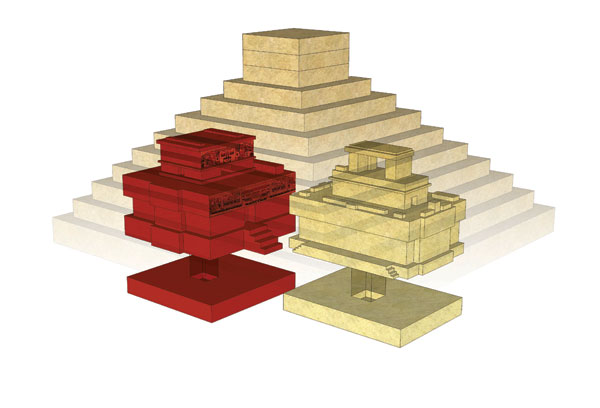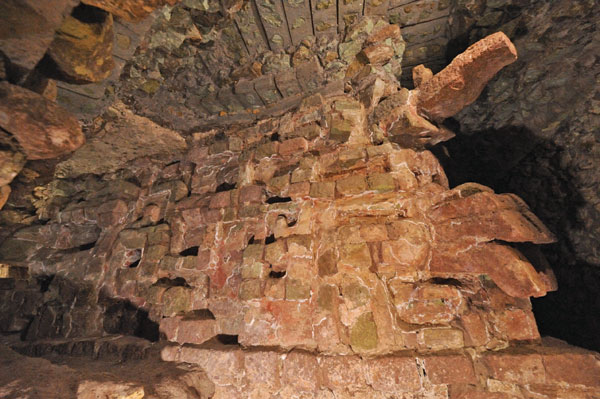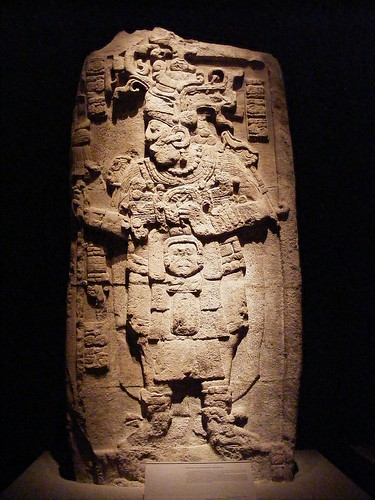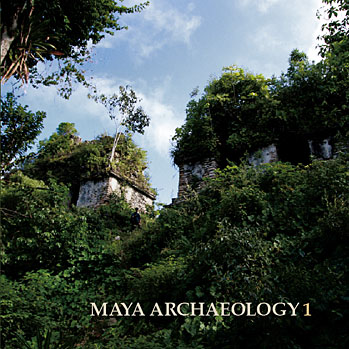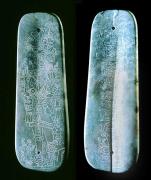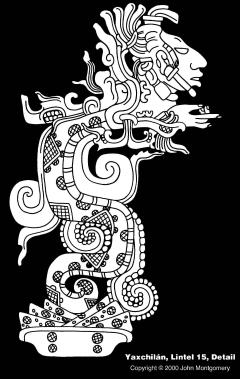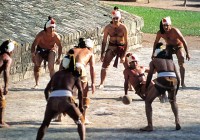Maya News Updates 2007, No. 78: Palma de Mallorca, Spain - Photo Exhibit "Los Mayas, Tradiciones del Sol" Opened
On November 7, 2007, the photo exhibit "Los mayas, tradiciones del sol" was officially opened at the Fundación Sophia, Palma de Mallorca, Spain. The exhibit was reported on in short by for instance the daily Yucatecan newspaper Diario de Yucatan, today Friday, November 16, 2007. The exhibit will also be shown in Madrid, Barcelona, and Valencia (edited by MNU):
Los mayas se pasean en España - Observar la bajada de la serpiente emplumada por el Castillo de Chichén Itzá o averiguar la equivalencia de una fecha actual en el calendario maya son algunas de las sorpresas de la muestra “Los mayas, tradiciones del sol”, que la NASA, en colaboración con la Fundación Sophia, presenta en España, informa EFE. La exhibición, que comenzó su recorrido en la isla de Mallorca (en el archipiélago balear), visitará Madrid, Barcelona y Valencia.
Un total de 45 fotografías y 15 paneles conforman la muestra, cedida a la Fundación por la NASA, la Universidad de California y el Instituto de Antropología e Historia de México, y reeditada en España, para difundir los secretos astronómicos de los mayas (Diario de Yucatan).
The Fundación Sophia provides a detailed press release on the exhibit at its website, the edited version of which is presented here (edited by MNU):
"Los Mayas, Tradiciones del Sol" en la Fundación Sophia - Los Mayas, Tradiciones del Sol, una exposición fotográfica producida por el Foro Educativo Conexión Sol -Tierra de la NASA, la Universidad de California en Berkeley y el Instituto Nacional de Antropología e Historia de México, se inauguró (...) el miércoles 7 de noviembre (...) la sede de la Fundación Sophia (...) con la presencia de la Cónsul Honoraria de México en Palma de Mallorca, Ana Moreno Díaz Rubin y un numeroso público. La exposición permanecerá abierta hasta el 14 diciembre, de lunes a viernes, de 18 a 22h. La entrada es libre.
La colorida muestra ha sido cedida a la Fundación Sophia por la NASA, la Universidad de California y el Instituto Nacional de Antropología e Historia de México y reeditada en España con el patrocinio del Centro de Impresión Digital CID y la colaboración de TACA Airlines, para formar parte de las herramientas didácticas que la fundación utiliza para promover el pensamiento y las manifestaciones artísticas de las civilizaciones que han dejado su huella indeleble en la historia de la humanidad y podrá ser vista en otras ciudades españolas de la mano de la Fundación Sophia a partir de febrero del 2008.
La exposición fue concebida por la Dra. Isabel Hawkins, astrónoma y directora del Centro para Educación en las Ciencias, del Laboratorio de Ciencias Espaciales de la Universidad de Califronia en Berkeley y del Foro Educativo Sol-Tierra de la NASA, y por el Dr. José Huchim, arqueo-astrónomo y director del Sitio Arqueológico de Uxmal, en México, y el Dr. James Thieman, del Centro Espacial Goddard de la NASA, como un proyecto educativo para acercar la astronomía a los centros educativos en los Estados Unidos y entre las comunidades de descendencia Maya en México.
“El objetivo del Foro Sol Tierra de la NASA es el de proporcionar al público oportunidades para enseñanza y aprendizaje que puedan mejorar la habilidad científica, estimular el interés en las carreras científicas, de tecnología, ingeniería y matemáticas, destacando aquellas culturas antiguas que alcanzaron un sorprendente grado de desarrollo científico, que puede ser admirado a través de sus construcciones, su complejo sistema matemático, su calendario y su sistema de observación del firmamento, como lo fue el caso de los Mayas”, explico la Dra. Isabel Hawkins. “Este programa ofrece una especial contribución a la educación formal y no reglada”, agregó.
Los visitantes podrán apreciar en “Los Mayas, Tradiciones del Sol”, distintos aspectos y momentos en que el sol interactúa con los impresionantes monumentos Mayas, como es el caso del “descenso del Dios Kukulkán (Quetzalcoatl)” en la pirámide conocida como “El Castillo”, en el sitio arqueológico de Chichén Itzá, en Yucatán, fenómeno que puede ser observado en los equinoccios de primavera y otoño.
“Se necesita mucho conocimiento matemático y astronómico para hacer que este y otros fenómenos se conjuguen de esta manera en varias de las pirámides y templos en Chichén Itzá, Uxmal, Dzibilchaltún y Mayapán”, afirmó el Dr. José Huchim, un arqueo-astrónomo de descendencia Maya. “La precisión con la que lograron calcular el tiempo es tan asombrosa, que sólo la astronomía moderna ha podido superarla”, explicó Huchim, destacando que los Mayas desarrollaron un sistema de numeración que incorporó en cero.
“Es un honor para nosotros acoger en nuestra sede una exposición didáctica que destaque el eterno anhelo del hombre por estudiar e interactuar con su entorno como lo hicieron los Mayas”, declaró desde México el Dr. Francis J. Vilar, Presidente de la Fundación Sophia, quién se encuentra de visita arqueológica con una expedición cultural de esta institución en algunos enclaves Mayas. “El estudio y difusión de la civilización Maya, es uno de nuestros programas más activos”, agregó.
“Actualmente hay más de 6 millones de mayas viviendo en México, Guatemala, Honduras y El Salvador, así como en Estados Unidos y en otras naciones, que preservan aún sus tradiciones, entre ellas su lengua, un alguna de las más de treinta variantes”, explicó el José Huchim. Es por eso que los textos explicativos de esta exposición están en tres idiomas: Maya, Español e Inglés, además de estar apoyada de un sitio Web, a través de www.fundacionsophia.com, en la que también se explican algunos conceptos básicos acerca del calendario Maya e incluso se puede introducir alguna fecha moderna para ver su equivalencia en dicho calendario.
Más de 45 fotografías, 15 paneles explicativos y una presentación interactiva por ordenador componen está colorida muestra exposición, reeditada en Mallorca gracias al patrocinio del Centro de Impresión Digital CID y la colaboración de TACA Airlines. “Este es un proyecto educativo de gran alcance y hemos creído idóneo participar en él”, afirmó Pedro Mesquida, director gerente de CID.
“Los Mayas, Tradiciones del Sol” forma parte del ciclo de actividades dedicada a la Civilización Maya, que cada año organiza la Fundación Sophia para difundir el estudio de esta brillante civilización. “Este es el tercer año que llevamos a cabo el ciclo Maya en Palma y actualmente tenemos una de nuestras exposiciones, 'La Pervivencia de los Mayas', en Long Island University en Nueva York”, comentó el Prof. Antonio Marí, director ejecutivo de la Fundación Sophia. “Con estas actividades consolidamos el estudio de los esta civilización en nuestros programas de investigación, difusión e intercambio”, agregó (...) (source Fundacion Sophia).
La colorida muestra ha sido cedida a la Fundación Sophia por la NASA, la Universidad de California y el Instituto Nacional de Antropología e Historia de México y reeditada en España con el patrocinio del Centro de Impresión Digital CID y la colaboración de TACA Airlines, para formar parte de las herramientas didácticas que la fundación utiliza para promover el pensamiento y las manifestaciones artísticas de las civilizaciones que han dejado su huella indeleble en la historia de la humanidad y podrá ser vista en otras ciudades españolas de la mano de la Fundación Sophia a partir de febrero del 2008.
La exposición fue concebida por la Dra. Isabel Hawkins, astrónoma y directora del Centro para Educación en las Ciencias, del Laboratorio de Ciencias Espaciales de la Universidad de Califronia en Berkeley y del Foro Educativo Sol-Tierra de la NASA, y por el Dr. José Huchim, arqueo-astrónomo y director del Sitio Arqueológico de Uxmal, en México, y el Dr. James Thieman, del Centro Espacial Goddard de la NASA, como un proyecto educativo para acercar la astronomía a los centros educativos en los Estados Unidos y entre las comunidades de descendencia Maya en México.
“El objetivo del Foro Sol Tierra de la NASA es el de proporcionar al público oportunidades para enseñanza y aprendizaje que puedan mejorar la habilidad científica, estimular el interés en las carreras científicas, de tecnología, ingeniería y matemáticas, destacando aquellas culturas antiguas que alcanzaron un sorprendente grado de desarrollo científico, que puede ser admirado a través de sus construcciones, su complejo sistema matemático, su calendario y su sistema de observación del firmamento, como lo fue el caso de los Mayas”, explico la Dra. Isabel Hawkins. “Este programa ofrece una especial contribución a la educación formal y no reglada”, agregó.
Los visitantes podrán apreciar en “Los Mayas, Tradiciones del Sol”, distintos aspectos y momentos en que el sol interactúa con los impresionantes monumentos Mayas, como es el caso del “descenso del Dios Kukulkán (Quetzalcoatl)” en la pirámide conocida como “El Castillo”, en el sitio arqueológico de Chichén Itzá, en Yucatán, fenómeno que puede ser observado en los equinoccios de primavera y otoño.
“Se necesita mucho conocimiento matemático y astronómico para hacer que este y otros fenómenos se conjuguen de esta manera en varias de las pirámides y templos en Chichén Itzá, Uxmal, Dzibilchaltún y Mayapán”, afirmó el Dr. José Huchim, un arqueo-astrónomo de descendencia Maya. “La precisión con la que lograron calcular el tiempo es tan asombrosa, que sólo la astronomía moderna ha podido superarla”, explicó Huchim, destacando que los Mayas desarrollaron un sistema de numeración que incorporó en cero.
“Es un honor para nosotros acoger en nuestra sede una exposición didáctica que destaque el eterno anhelo del hombre por estudiar e interactuar con su entorno como lo hicieron los Mayas”, declaró desde México el Dr. Francis J. Vilar, Presidente de la Fundación Sophia, quién se encuentra de visita arqueológica con una expedición cultural de esta institución en algunos enclaves Mayas. “El estudio y difusión de la civilización Maya, es uno de nuestros programas más activos”, agregó.
“Actualmente hay más de 6 millones de mayas viviendo en México, Guatemala, Honduras y El Salvador, así como en Estados Unidos y en otras naciones, que preservan aún sus tradiciones, entre ellas su lengua, un alguna de las más de treinta variantes”, explicó el José Huchim. Es por eso que los textos explicativos de esta exposición están en tres idiomas: Maya, Español e Inglés, además de estar apoyada de un sitio Web, a través de www.fundacionsophia.com, en la que también se explican algunos conceptos básicos acerca del calendario Maya e incluso se puede introducir alguna fecha moderna para ver su equivalencia en dicho calendario.
Más de 45 fotografías, 15 paneles explicativos y una presentación interactiva por ordenador componen está colorida muestra exposición, reeditada en Mallorca gracias al patrocinio del Centro de Impresión Digital CID y la colaboración de TACA Airlines. “Este es un proyecto educativo de gran alcance y hemos creído idóneo participar en él”, afirmó Pedro Mesquida, director gerente de CID.
“Los Mayas, Tradiciones del Sol” forma parte del ciclo de actividades dedicada a la Civilización Maya, que cada año organiza la Fundación Sophia para difundir el estudio de esta brillante civilización. “Este es el tercer año que llevamos a cabo el ciclo Maya en Palma y actualmente tenemos una de nuestras exposiciones, 'La Pervivencia de los Mayas', en Long Island University en Nueva York”, comentó el Prof. Antonio Marí, director ejecutivo de la Fundación Sophia. “Con estas actividades consolidamos el estudio de los esta civilización en nuestros programas de investigación, difusión e intercambio”, agregó (...) (source Fundacion Sophia).





